By: Molly English-Bowers

 A practicing plastic surg
A practicing plastic surg eon for 36 years, Malcolm Roth, MD, has spent the last 25 years volunteering in the name of patient care, equitable treatment for physicians, and ways for those physicians to thrive. His commitment to advocacy for physicians in the Capital District led Roth to leadership roles in a number of physician groups, including the American Society of Plastic Surgeons, the New York Society of Plastic Surgeons, the New York Society for Surgery of the Hand, and the New York County Medical Society. He currently is in the last year of a two-year term as president of the Medical Society of Albany County.
eon for 36 years, Malcolm Roth, MD, has spent the last 25 years volunteering in the name of patient care, equitable treatment for physicians, and ways for those physicians to thrive. His commitment to advocacy for physicians in the Capital District led Roth to leadership roles in a number of physician groups, including the American Society of Plastic Surgeons, the New York Society of Plastic Surgeons, the New York Society for Surgery of the Hand, and the New York County Medical Society. He currently is in the last year of a two-year term as president of the Medical Society of Albany County.
“I got involved because we all need to be able to continue to practice, to do what we feel our mission is, which is to take care of people,” Roth said. “And if we can’t afford to keep the doors open, we can’t afford to do that. One way to take care of people is to speak to legislators and try to advocate for a climate that allows us to take care of our patients.”
The Albany County Medical Society is one of 54 such groups in New York State; county-level members automatically are enrolled in the Medical Society of the State of New York as well as the American Medical Association. These collectives represent all physicians—whether in a solo practice, part of a small group, working in a “super group,” employed by a hospital or those in academia.
“I think it’s really important for our patients that physicians are advocates to make certain that our legislators not pass legislation that would hinder access to quality care and also to maintain legislation that protects patients and physicians,” Roth said.
 As Roth tells it, when he was in his third year of medical school in 1980, he grew tired of hearing practicing physicians complaining about issues that negatively affected their ability to do their jobs.
As Roth tells it, when he was in his third year of medical school in 1980, he grew tired of hearing practicing physicians complaining about issues that negatively affected their ability to do their jobs.
At that time, the malpractice crisis was in full swing, and that carried with it the very real possibility that physicians couldn’t afford to work in New York.
“It was the Sword of Damocles hanging over the head of every physician in New York State,” Roth said.
“I spoke up to them and said they need to go to Albany and complain to the Legislature if they wanted to get something done.
 Unfortunately, the answer I got then and I still get now is, ‘I’m too busy.’
Unfortunately, the answer I got then and I still get now is, ‘I’m too busy.’
“And so, the reality is there are not enough physicians who are willing to take time off whether it’s once a year to go to Albany or to Washington, or once a week. It could be after work to speak to a local politician to tell them how they’re having a hard time because of legislation that’s weighing down on them, that’s making it difficult for all of us. It comes down to the bottom line.”
Practicing physicians are business people and if the cost of staying in business becomes burdensome, the business could shutter. “It’s very unusual that somebody says to themselves, ‘I want to make a lot of money so I’m going to be a physician.’ What they say is that they want to take care of people. And one way to take care of people is to speak to legislators and try to advocate for a climate that allows us to take care of our patients and not worry about a lawyer coming to sue us,” Roth said.
Medical Society of the State of New York
When a physician joins their county medical society, they automatically become a member of the Medical Society of the State of New York (MSSNY). With main offices in Albany, MSSNY has ready access to state government, including the Legislature and governor. Jerome Cohen, MD, is the president of the society.
“MSSNY provides a collective voice for physicians,” Cohen said. “We have a common legislative agenda and advocacy on issues that are important to our members. The Medical Society is a large group, numbering 16,500 physicians, and as such we are more effective than what an individual can do on their own.”
In addition to being the political agent for New York’s physicians, MSSNY also provides the advantage of anonymity for physicians to present problems without fearing retribution from insurance companies or employers, as well as leadership development, member benefits, physician wellness, payer relations, and education.
“MSSNY has been around since 1807,” said Cohen. “Obviously, things have changed over the past several centuries and the Medical Society has changed with that. When the society was first formed it was exclusively a men’s club, women were not in medical practice. With women in medical practice, priorities change and MSSNY has welcomed women into the leadership fold.”
Advocacy
Meeting several times a year, MSSNY’s Legislative and Physician Advocacy Committee determines legislative priorities from policies adopted at the House of Delegates, which convenes every April; officer elections occur at the same time. “The Legislative Committee determines our priorities, the issues we should be focusing on,” said Morris M. Auster, Esq., senior vice president and chief legislative counsel for MSSNY.
“Historically, they have been about advancing the ability of patients to receive needed care in a timely manner, and that takes a number of different forms,” he added. “It can be the timing of payments by insurance companies, reducing or eliminating health insurer hassles such as pre-authorizations, having to respond to a million different records requests, public health concerns such as immunizations. We also have been working to try to get liability insurance costs reduced because in New York we have some of the highest insurance costs in the country.”
Part of the job of Thomas Lee, MD, MBA, executive vice president of MSSNY, is to explore and improve member benefits. “One of the greatest benefits to members, and by extension non-members, is we help pass laws and improve regulations that benefit all physicians and patients,” he said.
 “For example, the society has opposed excess liabilities expansion because liability is a cost, it’s an insurance premium physicians pay into. When there’s increasing liability that will cost physicians and their employers more money and that takes money out of the healthcare system for patient care. As a result, we save a physician $25,000- $30,000, on average, a year in premium costs alone.” That savings more than pays for the annual MSSNY membership fee of $460.
“For example, the society has opposed excess liabilities expansion because liability is a cost, it’s an insurance premium physicians pay into. When there’s increasing liability that will cost physicians and their employers more money and that takes money out of the healthcare system for patient care. As a result, we save a physician $25,000- $30,000, on average, a year in premium costs alone.” That savings more than pays for the annual MSSNY membership fee of $460.
In addition, MSSNY facilitates a number of committees and subcommittees devoted to specific issues physicians may face. Counted among those are: Employed Physicians, Physician Wellness and Resilience, Scope of Practice, Legislation and Physician Advocacy, and Public Health.

MSSNY has developed the Grassroot Action Center for physicians to send letters to their legislators. “We give them a starting point and they can then customize it,” said Auster. “We also have templates for op-eds or letters to the editor. We try to give physicians tools to help them write and get pieces in the local media to educate the public about a particular piece of legislation that might be helpful to patient care or call attention to one that might be harmful to patient care.”
Leadership Development
Members,
new and existing, are urged to volunteer for committees and attend advocacy activities, and to write letters and make calls to their legislators. “As people volunteer, we see who is stepping up and we encourage that,” said Cohen. “Once we identify those who are volunteering and stepping up, we encourage them to become leaders at the state level.” But members aren’t joining MSSNY in a vacuum; mentors stand at the ready should they need assistance.
“We assign mentors to those who are new to leadership, and there is a parallel system at the county level.” That mentoring occurs in the Office of the President as well. “We have three people in that office,” Cohen said, “the past president, the current president, and the future president. The past president is mentoring the current president who then mentors the future president so there is continuity at that level.” Presidential terms last one year, and with three physicians in the Office of the President, it’s a three year commitment.
To help meet the needs of women, this past year, MSSNY established a Women’s Leadership Academy, designed to foster female leadership within the organization. MSSNY now spends time on issues of work/life balance and practicing medicine while also raising a family.
Physician Wellness
Working as a doctor brings with it enormous stresses, with burnout sometimes being the ultimate result. MSSNY designed a Peer-to Peer program to ease some of the anxiety. Callers into the program–medical students, residents, and fellows, as well as attending physicians in 17 specialtie are paired with peers of similar circumstance to work through issues.
“It is not a formal counseling program,” noted Lee, “but is really to share experiences and get some personal guidance to the caller. The problems identified could be personal, economic, practice or administrative. This is a confidential program, and we destroy the files after the encounter is closed.”
Should the caller need more intensive help, MSSNY runs a Physician Health Program that deals with substance use disorders and significant psychiatric disorders. “A referral can be made confidentially and if the caller opts to participate that’s also confidential,” Lee said.
 “I can’t think of a single reason why a physician should not enroll in a collective that is advocating for him or her,” said Lee. “We’re there to advocate for physicians and patients, and it is also our job to provide an environment which welcomes more physicians who want to practice in New York. Our friends in the government and regulatory world and insurance industry need to recognize that: By improving the work environment for physicians, you’re going to have a robust workforce to take care of patients.”
“I can’t think of a single reason why a physician should not enroll in a collective that is advocating for him or her,” said Lee. “We’re there to advocate for physicians and patients, and it is also our job to provide an environment which welcomes more physicians who want to practice in New York. Our friends in the government and regulatory world and insurance industry need to recognize that: By improving the work environment for physicians, you’re going to have a robust workforce to take care of patients.”
Education Physicians always need to meet required educational hours and MSSNY can help. It offers free access 24/7 to online continuing medical education courses. Other opportunities for learning include mandatory courses on controlled substance prescribing and infection control. MSSNY also credentials and co-sponsors CME programs for healthcare institutions and county medical societies.
Physicians always need to meet required educational hours and MSSNY can help. It offers free access 24/7 to online continuing medical education courses. Other opportunities for learning include mandatory courses on controlled substance prescribing and infection control. MSSNY also credentials and co-sponsors CME programs for healthcare institutions and county medical societies.
Member Benefits
Daily and weekly newsletters keep physicians up to date on healthcare issues of the day. Through its business partners, MSSNY offers discounted products on life and disability insurance and an exclusive 10 percent discount on medical liability insurance premiums. Other unique member benefits include investment products such as an exclusive Physicians Life Income Plan, which provides tax advantaged current income and asset protection. An attractive higher education loan program for physicians and their families is available for initial borrowing and refinancing. Additionally, individual and group health insurance options are available for practicing physicians, their families, and employees. “We continue to interview business partners regularly to assess and expand our benefits program,” said Lee.
Payer Relations
MSSNY’s expertise helps physicians optimize revenue through resolution of claims, takebacks, and billing issues, and assists members in navigating healthcare regulations. A frequent cause of physicianstress and burnout are administrative burdens imposed by federal and state governments,” Lee said.
If a physician is employed by a healthcare institution, he or she must comply with additional administrative and documentation requirements. “Many physicians have to document after their regular work hours by accessing the system remotely,” Lee said. “Further administrative burdens include prior authorization requirements and responding to document requests. These all significantly compound a physician’s workload. Even with clerical help, at the end of the day it falls on the physicians.”
Medical Society of Albany County
Even though MSSNY serves as the conduit between county societies and state government, the Albany County group can at any time call an executive committee to discuss and decide upon an issue.
 “That has always been the focus on the county,” said Jonathan Dougherty, executive vice president of the Medical Society of Albany County. “If there’s an issue that comes up, we form a subcommittee for the life of the issue.” The group, which numbers 400 members, also holds legislative retreats twice a year, one in the Catskills and the other in the Adirondack village of Lake Placid.
“That has always been the focus on the county,” said Jonathan Dougherty, executive vice president of the Medical Society of Albany County. “If there’s an issue that comes up, we form a subcommittee for the life of the issue.” The group, which numbers 400 members, also holds legislative retreats twice a year, one in the Catskills and the other in the Adirondack village of Lake Placid.
Furthermore, if there is an issue that needs state or even federal legislative attention, those can start with the county as well. “Individual physicians or counties can prepare resolutions that are introduced to the House of Delegates,” Dougherty said.
 “If those resolutions pass the House of Delegates, lobbyists place them into legislative recommendations or oppositions. Then MSSNY gets legislative sponsors one in the state Assembly and one in the Senate. Or the resolution gets referred to the AMA so it can get introduced into Congress.”
“If those resolutions pass the House of Delegates, lobbyists place them into legislative recommendations or oppositions. Then MSSNY gets legislative sponsors one in the state Assembly and one in the Senate. Or the resolution gets referred to the AMA so it can get introduced into Congress.”
While doctors can choose to join their county society, Dougherty encourages membership for many reasons, chief among them the advocacy that takes place at the Capitol. There is strength in numbers–more membership dues means more lobbyists employed to further physicians’ issues in the state Legislature.
“It’s important to note that what happens on the state level affects us at the county, and vice-versa,” said Dougherty. “Just because doctors may not want to participate is not going to stop the trial lawyers, it’s not going to stop the community action groups or the allied health professionals. They’re going to sink every proposed legislation they can.

“Doctors are individualists and a lot of them don’t understand how important advocacy is. We’ve got to have resources to be able to protect them. Doctors need advocacy. They need support.”
For more information on the Medical Society of the State of New York, visit mssny.org or call (518) 465 8085. You can reach the Medical Society of Albany and Ulster County at albmed.org or by calling (518) 439-0626.

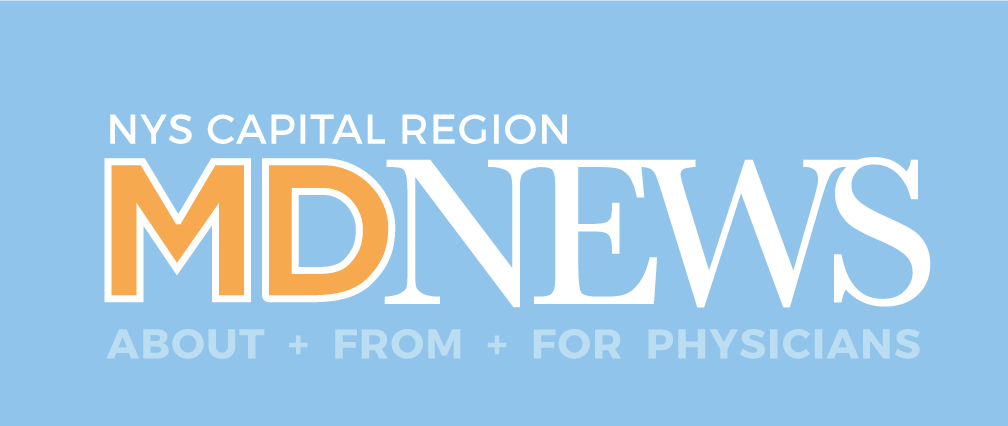


 Throughout my career I have served on a variety of Not for Profit Boards. It’s a way to serve the community, open doors, connect people and causes, and to learn Boards can help you to build new skills, connect with new parts of the community, begin to plan for things you want to do in your free time or in retirement. Good Board members want to learn and aren’t afraid to ask questions. Recently I was at the View Arts Center in Old Forge and met a new surgeon who had moved to Syracuse. She had taken the time to explore not for profit arts organizations in the region and was visiting them to get to know the region.
Throughout my career I have served on a variety of Not for Profit Boards. It’s a way to serve the community, open doors, connect people and causes, and to learn Boards can help you to build new skills, connect with new parts of the community, begin to plan for things you want to do in your free time or in retirement. Good Board members want to learn and aren’t afraid to ask questions. Recently I was at the View Arts Center in Old Forge and met a new surgeon who had moved to Syracuse. She had taken the time to explore not for profit arts organizations in the region and was visiting them to get to know the region. Most in healthcare and medical malpractice have been keeping an eye on the GFA legislation for several years now knowing the negative effect it would have on an already stressed sector. While all involved are assumed to have good intentions, it appears they have a blind spot when it comes to the GFA’s impact on the State’s medical malpractice insurance market and in turn healthcare. This failure to address the concerns continues with GFA 3.0 despite being clearly indicated in past vetoes.
Most in healthcare and medical malpractice have been keeping an eye on the GFA legislation for several years now knowing the negative effect it would have on an already stressed sector. While all involved are assumed to have good intentions, it appears they have a blind spot when it comes to the GFA’s impact on the State’s medical malpractice insurance market and in turn healthcare. This failure to address the concerns continues with GFA 3.0 despite being clearly indicated in past vetoes.

 Bold thinking. Bolder actions. We are Medtronic. Medtronic plc, headquartered in Galway, Ireland, is the leading global healthcare technology company that boldly attacks the most challenging health problems facing humanity by searching out and finding solutions. Our Mission — to alleviate pain, restore health, and extend life — unites a global team of 95,000+ passionate people across more than 150 countries. Our technologies and therapies treat 70 health conditions and include cardiac devices, surgical robotics, insulin pumps, surgical tools, patient monitoring systems, and more. Powered by our diverse knowledge, insatiable curiosity, and desire to help all those who need it, we deliver innovative technologies that transform the lives of two people every second, every hour, every day. Expect more from us as we empower insight-driven care, experiences that put people first, and better outcomes for our world. In everything we do, we are engineering the extraordinary. For more information on Medtronic, visit www.Medtronic.com.
Bold thinking. Bolder actions. We are Medtronic. Medtronic plc, headquartered in Galway, Ireland, is the leading global healthcare technology company that boldly attacks the most challenging health problems facing humanity by searching out and finding solutions. Our Mission — to alleviate pain, restore health, and extend life — unites a global team of 95,000+ passionate people across more than 150 countries. Our technologies and therapies treat 70 health conditions and include cardiac devices, surgical robotics, insulin pumps, surgical tools, patient monitoring systems, and more. Powered by our diverse knowledge, insatiable curiosity, and desire to help all those who need it, we deliver innovative technologies that transform the lives of two people every second, every hour, every day. Expect more from us as we empower insight-driven care, experiences that put people first, and better outcomes for our world. In everything we do, we are engineering the extraordinary. For more information on Medtronic, visit www.Medtronic.com.
 “If I could, I would spend most of my time in the operating room on the da Vinci,” said Wang, who is with St. Peter’s Hepatobiliary, Pancreatic, and General Surgery, a practice of St. Peter’s Health Partners Medical Associates. “I would not work at a place that did not have a robot.”
“If I could, I would spend most of my time in the operating room on the da Vinci,” said Wang, who is with St. Peter’s Hepatobiliary, Pancreatic, and General Surgery, a practice of St. Peter’s Health Partners Medical Associates. “I would not work at a place that did not have a robot.” The Capital Region is fortunate to be the home of two hospitals within St. Peter’s Health Partners to have secured five da Vinci surgical systems: four located at St. Peter’s Hospital in Albany and one at Samaritan Hospital in Troy.
The Capital Region is fortunate to be the home of two hospitals within St. Peter’s Health Partners to have secured five da Vinci surgical systems: four located at St. Peter’s Hospital in Albany and one at Samaritan Hospital in Troy.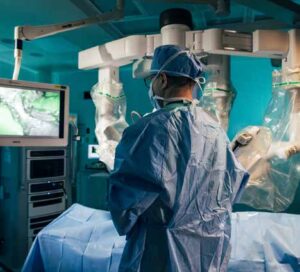

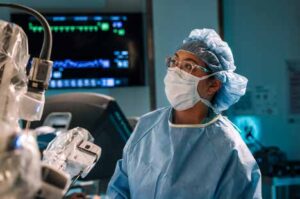
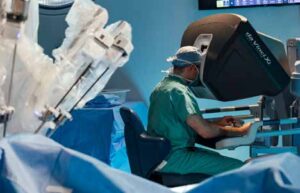
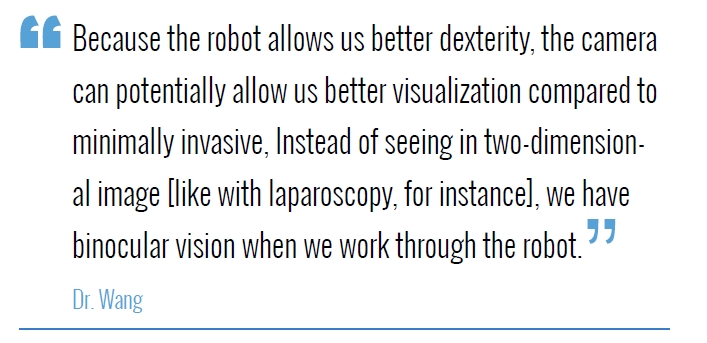 “I think it doesn’t give the patient the optimal care if you can’t offer robotic surgery around the clock,” Dr. Montalto said. “The time of day shouldn’t matter.”
“I think it doesn’t give the patient the optimal care if you can’t offer robotic surgery around the clock,” Dr. Montalto said. “The time of day shouldn’t matter.”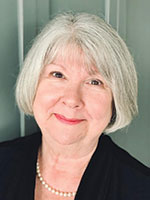 Definition: “Community paramedicine is a relatively new and evolving healthcare model. It allows paramedics and emergency medical technicians (EMTs) to operate in expanded roles by assisting with public health and primary healthcare and preventive services to underserved populations in the community.” Rural Health Information Hub
Definition: “Community paramedicine is a relatively new and evolving healthcare model. It allows paramedics and emergency medical technicians (EMTs) to operate in expanded roles by assisting with public health and primary healthcare and preventive services to underserved populations in the community.” Rural Health Information Hub Like most other organizations, healthcare facilities have moved toward total digitization. The major benefit of this change is that it has provided an efficient way of sharing patient records among healthcare professionals. Compared to paper-based records, electronic health records require less workforce, time, and physical storage.
Like most other organizations, healthcare facilities have moved toward total digitization. The major benefit of this change is that it has provided an efficient way of sharing patient records among healthcare professionals. Compared to paper-based records, electronic health records require less workforce, time, and physical storage.



 Ellen Cooper, ASC Director at EWASC, explained how the general environment can also lead to higher patient satisfaction. “It’s a very different focus at an ASC,” she said. “If you have your surgery in the hospital, you’ll go to the recovery room and even though you may have had a simple hand surgery or one of Dr. Flik’s knee scopes, you can be placed next to a patient who’s recovering from a major surgery, is on a ventilator and just requires a lot of care. In the ASC, it’s a very different environment altogether. We treat our patients like family and it’s a much more personalized experience.”
Ellen Cooper, ASC Director at EWASC, explained how the general environment can also lead to higher patient satisfaction. “It’s a very different focus at an ASC,” she said. “If you have your surgery in the hospital, you’ll go to the recovery room and even though you may have had a simple hand surgery or one of Dr. Flik’s knee scopes, you can be placed next to a patient who’s recovering from a major surgery, is on a ventilator and just requires a lot of care. In the ASC, it’s a very different environment altogether. We treat our patients like family and it’s a much more personalized experience.”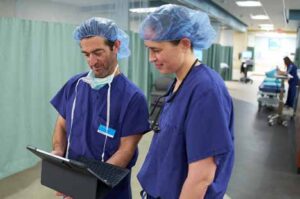

 Similarly, according to Fitzgerald, further growing ASC care is a primary goal of OrthoNY moving forward, for the benefit of all at the organization but mostly importantly, for the patients.
Similarly, according to Fitzgerald, further growing ASC care is a primary goal of OrthoNY moving forward, for the benefit of all at the organization but mostly importantly, for the patients.